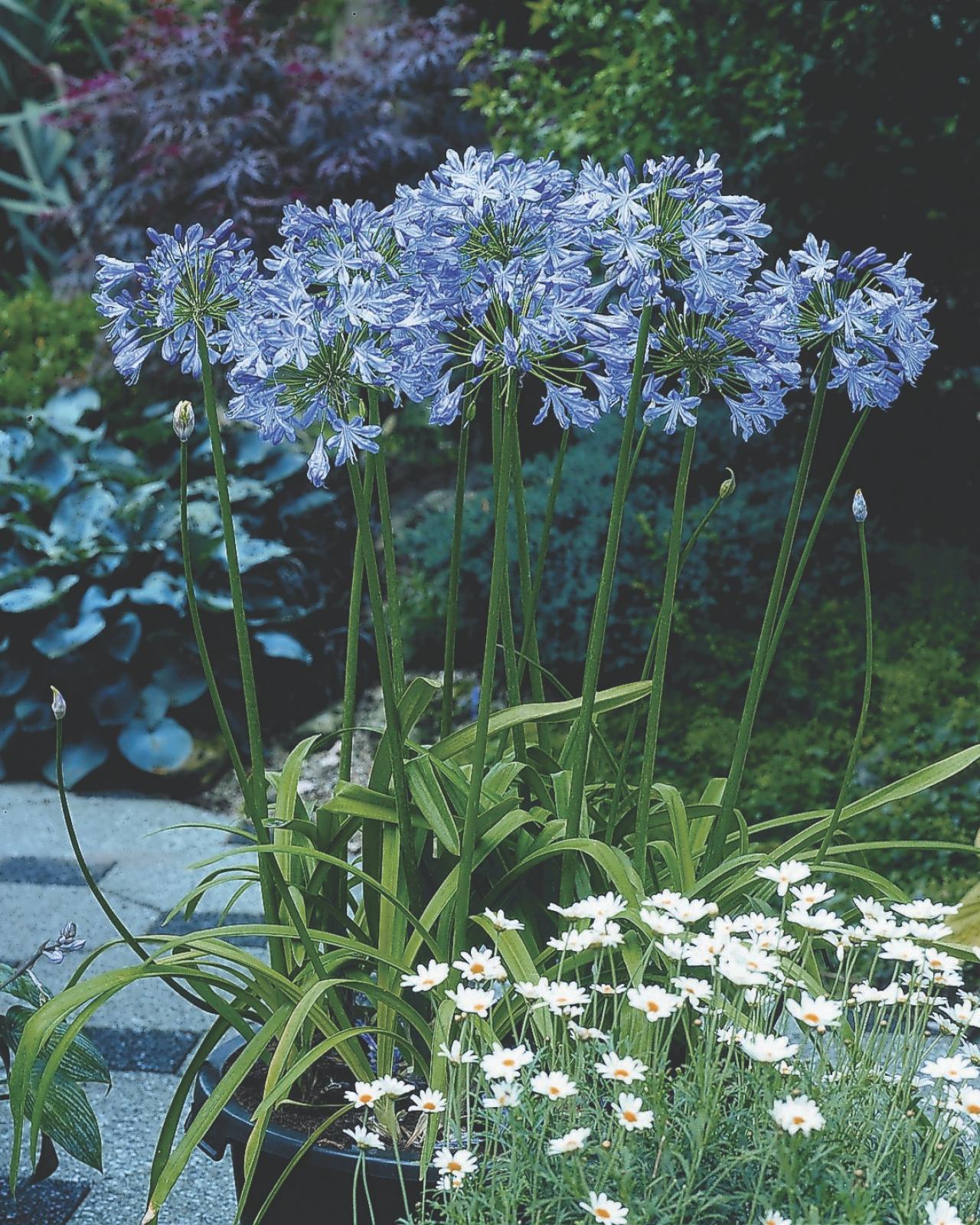Spectacular Agapanthus: Enhancing Your Yard's Elegance
Spectacular Agapanthus: Enhancing Your Yard's Elegance
Blog Article
Grasping the Art of Agapanthus Care: Important Steps for Healthy And Balanced Growth and Dynamic Flowers
In the world of horticulture, the growing of agapanthus stands as a gratifying venture for those who seek to nurture these classy blooming plants. With their striking flowers and stylish foliage, agapanthus has actually caught the attention of gardeners worldwide. Nevertheless, accomplishing optimal development and lively blossoms needs a nuanced approach that includes different important actions. From selecting the appropriate selection to mastering pruning strategies, the journey towards cultivating growing agapanthus plants is complex and holds the key to opening the complete capacity of these herb treasures.

Selecting the Right Agapanthus Variety

When picking the right Agapanthus variety for your yard, take into consideration aspects such as climate suitability, flower color, and growth behavior. Agapanthus, frequently called Lily of the Nile or African lily, can be found in a variety of colors varying from tones of purple and blue to white. Select a blossom shade that matches your existing yard palette to develop a harmonious landscape. In addition, take into consideration the climate in your area to ensure the Agapanthus range you pick can grow in your details problems. Some varieties are more tolerant of cold temperatures, while others choose warmer climates. Understanding the growth routine of different Agapanthus selections is crucial for correct positioning within your yard. Some varieties have a clumping growth behavior, perfect for containers or borders, while others have a more spreading nature, appropriate for ground cover or mass plantings. By very carefully examining these variables, you can pick the excellent Agapanthus selection to improve the elegance of your garden.
Suitable Growing Conditions
Thinking about the optimum ecological requirements is important for successful Agapanthus growing. Agapanthus plants are delicate to cool temperature levels and need to be safeguarded from frost throughout winter season months.
To make sure healthy development and vibrant blooms, plant Agapanthus bulbs at a depth of regarding 2-4 inches and area them 8-12 inches apart. Mulching around the base of the plants helps retain wetness and suppresses weed growth.
Watering and Fertilizing Tips
Keeping correct dampness degrees and giving essential nutrients are key elements in the care routine for Agapanthus plants. When it comes to watering Agapanthus, it is vital to strike an equilibrium. These plants favor constantly wet soil however are susceptible to root rot if overwatered.
Feeding Agapanthus More about the author is important for advertising healthy and balanced development and respected flowers. Use a well balanced plant food, such website here as a 10-10-10 formula, in the very early springtime as brand-new growth emerges. By complying with these watering and feeding ideas, you can guarantee your Agapanthus plants flourish and create vibrant, lasting blossoms.
Pruning Techniques for Agapanthus
Trimming Agapanthus plants at the ideal times and with correct methods is crucial for preserving their wellness and promoting optimum growth and flowering. The suitable time to trim Agapanthus is in late wintertime or very early springtime before new growth emerges. Start by eliminating any type of yellowing or dead leaves near the base of the plant. Cut them as close to the ground as possible without damaging the arising shoots.
Deadheading spent flowers can also reroute the plant's energy into producing even more flowers rather than setting seeds. If you desire to collect seeds for breeding, leave some blossoms to mature and dry on the plant.
Bear in mind to utilize tidy, sharp tools to make exact cuts and reduce the threat of introducing illness. Agapanthus. Regular trimming will certainly aid maintain your Agapanthus looking healthy and balanced and neat while guaranteeing a bountiful screen of stunning flowers
Handling Usual Bugs and Conditions
After ensuring proper pruning strategies for Agapanthus, it is essential to address typical pests and illness that can influence the health and wellness and vitality of these plants. One typical bug that impacts Agapanthus is the Agapanthus gall midget.
One more usual problem is fungal fallen leave place, which offers as dark sores on the fallen leaves. To avoid fungal conditions, ensure great air flow around the plants, stay clear of overhead watering, and eliminate any contaminated fallen leaves quickly. Additionally, Agapanthus plants can deal with root rot if they are grown in improperly draining pipes dirt. To prevent this, plant Agapanthus in well-draining soil and avoid overwatering. visit this web-site By being attentive and taking timely action versus insects and illness, you can assist your Agapanthus plants prosper and create lively flowers.

Conclusion
Finally, understanding the art of agapanthus care entails picking the appropriate variety, giving suitable growing conditions, appropriate watering and feeding, suitable pruning techniques, and resolving usual insects and conditions. By adhering to these necessary actions, you can make certain healthy growth and dynamic blossoms for your agapanthus plants. Bear in mind to regularly monitor and maintain your plants to promote their total well-being and longevity.
To guarantee healthy and balanced growth and vivid blossoms, plant Agapanthus light bulbs at a depth of about 2-4 inches and room them 8-12 inches apart. By complying with these watering and fertilizing pointers, you can ensure your Agapanthus plants grow and produce vibrant, resilient blossoms.
One typical parasite that impacts Agapanthus is the Agapanthus gall midget. Furthermore, Agapanthus plants can suffer from root rot if they are grown in badly draining pipes soil. By adhering to these important actions, you can make certain healthy growth and dynamic blossoms for your agapanthus plants.
Report this page